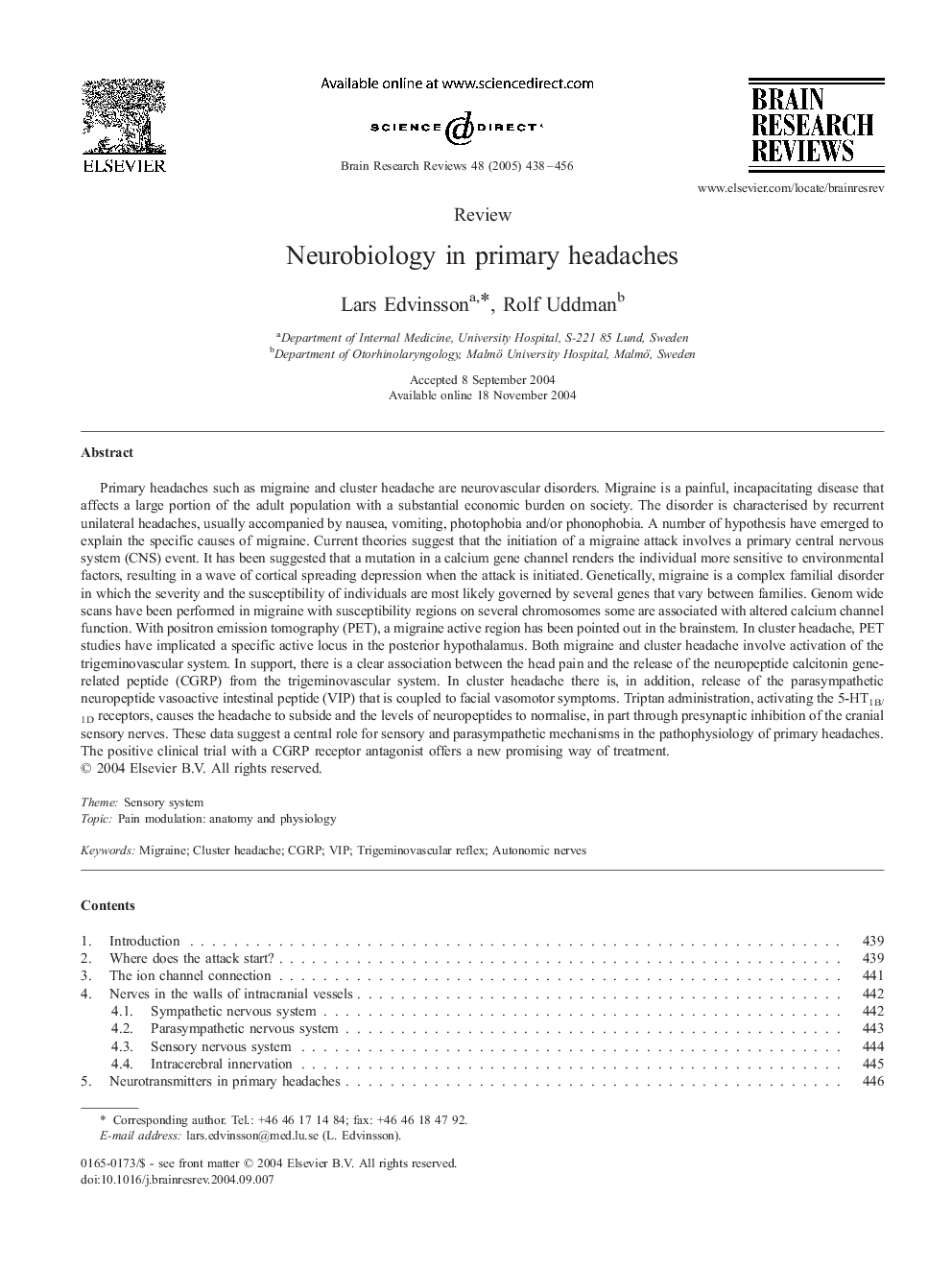| کد مقاله | کد نشریه | سال انتشار | مقاله انگلیسی | نسخه تمام متن |
|---|---|---|---|---|
| 9423120 | 1294774 | 2005 | 19 صفحه PDF | دانلود رایگان |
عنوان انگلیسی مقاله ISI
Neurobiology in primary headaches
دانلود مقاله + سفارش ترجمه
دانلود مقاله ISI انگلیسی
رایگان برای ایرانیان
کلمات کلیدی
موضوعات مرتبط
علوم زیستی و بیوفناوری
علم عصب شناسی
علوم اعصاب (عمومی)
پیش نمایش صفحه اول مقاله

چکیده انگلیسی
Primary headaches such as migraine and cluster headache are neurovascular disorders. Migraine is a painful, incapacitating disease that affects a large portion of the adult population with a substantial economic burden on society. The disorder is characterised by recurrent unilateral headaches, usually accompanied by nausea, vomiting, photophobia and/or phonophobia. A number of hypothesis have emerged to explain the specific causes of migraine. Current theories suggest that the initiation of a migraine attack involves a primary central nervous system (CNS) event. It has been suggested that a mutation in a calcium gene channel renders the individual more sensitive to environmental factors, resulting in a wave of cortical spreading depression when the attack is initiated. Genetically, migraine is a complex familial disorder in which the severity and the susceptibility of individuals are most likely governed by several genes that vary between families. Genom wide scans have been performed in migraine with susceptibility regions on several chromosomes some are associated with altered calcium channel function. With positron emission tomography (PET), a migraine active region has been pointed out in the brainstem. In cluster headache, PET studies have implicated a specific active locus in the posterior hypothalamus. Both migraine and cluster headache involve activation of the trigeminovascular system. In support, there is a clear association between the head pain and the release of the neuropeptide calcitonin gene-related peptide (CGRP) from the trigeminovascular system. In cluster headache there is, in addition, release of the parasympathetic neuropeptide vasoactive intestinal peptide (VIP) that is coupled to facial vasomotor symptoms. Triptan administration, activating the 5-HT1B/1D receptors, causes the headache to subside and the levels of neuropeptides to normalise, in part through presynaptic inhibition of the cranial sensory nerves. These data suggest a central role for sensory and parasympathetic mechanisms in the pathophysiology of primary headaches. The positive clinical trial with a CGRP receptor antagonist offers a new promising way of treatment.
ناشر
Database: Elsevier - ScienceDirect (ساینس دایرکت)
Journal: Brain Research Reviews - Volume 48, Issue 3, June 2005, Pages 438-456
Journal: Brain Research Reviews - Volume 48, Issue 3, June 2005, Pages 438-456
نویسندگان
Lars Edvinsson, Rolf Uddman,